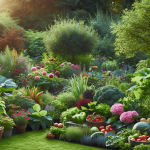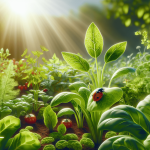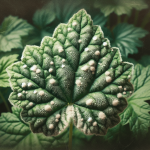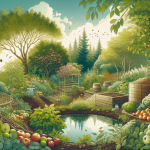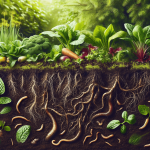This post may contain affiliate links. As an Amazon Associate, we may earn commissions from qualifying purchases.
What Are The Best Practices For Planting A Fruit Orchard?
Have you ever considered transforming a corner of your land into a vibrant and fruitful orchard? Imagining the joy of picking fresh apples, peaches, or pears straight from the tree is certainly enticing. But where does one begin in making this vision a reality? There’s a world of know-how to uncover, and it’s crucial to follow best practices to ensure your fruit orchard flourishes.
Choosing the Right Location
Location is paramount when it comes to planting a successful orchard. Imagine trying to grow a cactus in a rainforest; it just wouldn’t work. Likewise, fruit trees have particular needs that must be met for them to thrive.
Soil Quality
Fruit trees are picky about their soil. They demand well-draining soil to prevent root rot and other unpleasant fungal diseases. Conducting a soil test before planting is an excellent habit. You’re looking for soil with a pH ideally between 6.0 and 7.0. It’s not just about pH, either. The nutrients in soil are also crucial. If your soil test reveals deficiencies, it’s wise to amend it before planting.
Sunlight Requirements
Ask yourself: Is the spot you’re considering basking in the sun for at least six to eight hours daily? Most fruit trees are sunlight aficionados. Insufficient sunlight can stunt growth and reduce fruit production, which could lead to disappointment.
Wind Protection
In addition to soaking up the sun, your fruit trees will need some protection from high winds. Windy conditions can cause physical damage to the trees and can impede pollination. A natural windbreak like a hedge or even a fence can be a good investment.
Selecting the Suitable Fruit Varieties
Choosing the right fruit trees is like matchmaking for your orchard. You want the right fit to ensure happiness – or in this case, productivity.
Climate Compatibility
Understand your local climate and its suitability for different types of fruit trees. Some trees are more resilient to cold temperatures, while others crave warmth. Cling to a USDA Hardiness Zone map; it’s a handy tool that can guide you towards the best-suited varieties.
Pollination Needs
Self-pollinating, cross-pollinating, and grafted trees—terms that might sound technical but are essential when choosing your trees. Self-pollinating trees like peaches can do well on their own. Cross-pollinating varieties, such as apples, require company from another tree for fruitful relationships. Knowing these details can save you from future heartbreak.
Disease Resistance
Nobody likes to talk about diseases, but it’s a crucial topic. Some fruit trees are prone to specific diseases. Opting for disease-resistant varieties can save you a heap of trouble down the line. It’s like buying insurance for your orchard.
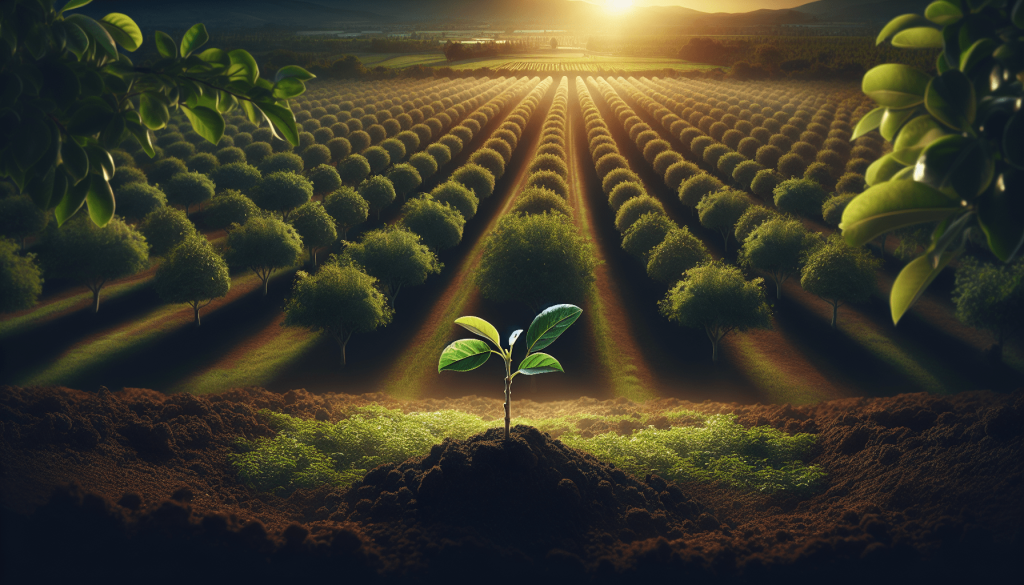
Planting Your Orchard
Planting fruit trees is a task that can feel ceremonial and exhilarating. After all, you’re starting the journey of nurturing something that will bear (literal) fruit for years to come.
Timing of Planting
Timing your planting is essential. For most fruit trees, planting in early spring while they’re still dormant provides the most advantageous start. However, fall planting can also be successful, giving trees time to establish roots before the growing season.
Proper Spacing
How you space your trees impacts their health and productivity. Crowded trees compete for nutrients, sunlight, and water, leading to stunted growth. Generally:
| Fruit | Spacing (between trees) | Row to Row Spacing |
|---|---|---|
| Apples | 20 feet | 30-35 feet |
| Peaches | 15-20 feet | 20-25 feet |
| Pears | 20 feet | 25-30 feet |
This spacing ensures that each tree has its elbow room, and this translates to better airflow and sunnier leaves.
Planting Methods
Digging the right kind of hole is more complicated than it sounds. A wide, shallow hole that accommodates the root system without crowding it is ideal. Placing the tree in the hole, backfilling with soil, and ensuring the graft union remains above ground sets your tree up for a robust start. A critical element is water – a deep soaking right after planting helps to settle the soil around the roots.
Ensuring Proper Care and Maintenance
The actual planting is just the beginning. Ongoing care and maintenance are essential to keep your trees healthy and productive.
Watering Practices
Young trees, like babies, need plenty of water to establish themselves. Regular, deep watering is crucial in the first few years. Mulching around the base helps retain moisture and keeps the roots cool, but make sure the mulch doesn’t touch the trunk to avoid rot.
Pruning and Training
Pruning keeps your trees in their best shape and encourages fruit production. It’s not about the bark but more about managing airflow and light penetration. Remove dead or damaged branches first, then focus on shaping the canopy. Training young trees to form a strong structure will pay off in the long run.
Disease and Pest Management
Prevention is always better than the cure. Regularly inspecting your orchard for signs of disease or pests can save your trees. Integrated Pest Management (IPM) practices, combining biological, cultural, physical, and chemical tools in a way that minimizes risks, can be very effective. Sometimes even just introducing beneficial insects like ladybugs can keep pests at bay.
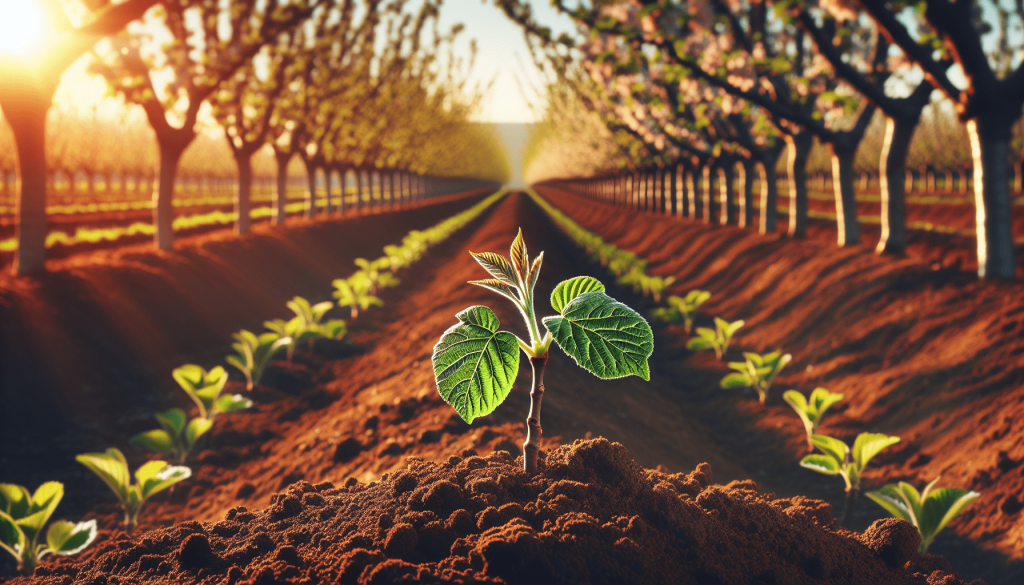
Fertilization and Soil Health
Feeding your trees goes beyond just throwing some fertilizer around. It’s about understanding their needs throughout the seasons.
Types of Fertilizers
Organic fertilizers, such as compost or well-rotted manure, work wonders. They not only provide nutrients but also improve soil texture. Inorganic fertilizers are concentrated and immediate but be wary of over-application, which can harm your trees.
Soil Amendments
Adding lime to raise pH or sulfur to lower it can adjust soil conditions to better suit fruit trees. Regular soil testing helps guide these amendments, ensuring that the soil remains fertile and supportive.
Protecting Your Orchard
Animals and frosts, oh my! Your orchard will face threats that need addressing.
Animal Control
Deer, rabbits, and rodents may find your orchard delectable. Installing fencing or tree guards can protect young trees from being nibbled on. Remember, early intervention can save a lot of hassle.
Frost Protection
Late frosts are a common threat, especially in spring when trees are budding. Using frost covers or employing orchard heaters can be effective in protecting your trees. Even simple measures like watering the trees before a frost night can help.
Harvesting and Post-Harvest Care
The moment of truth – harvesting! This is when your hard work literally bears fruit.
Indicators of Ripeness
Knowing the right time to harvest can be a game-changer. Color, firmness, and even taste testing can help determine if the fruit is ready. Picking too early or too late can affect flavor and storage quality.
Harvesting Techniques
Proper techniques minimize damage to both the tree and the fruit. Using clean, sharp pruners for cutting branches and gently twisting fruits off with a turn can keep everything intact and happy.
Post-Harvest Storage
Proper storage can extend the life of your fruit. Some fruits like apples and pears prefer cold storage, while others like peaches are best consumed quickly. Learning the specific needs of your fruit varieties will help in managing this.
Conclusion
Creating a thriving fruit orchard is a journey filled with anticipation, work, and finally, joy. By following these best practices, you’re setting yourself up for success. It’s not just about the delicious fruits you’ll harvest, but also about the process of nurturing and watching your trees grow. So, embark on your orchard adventure with confidence, knowing that you’re armed with knowledge and a touch of green thumb magic. Happy planting!

